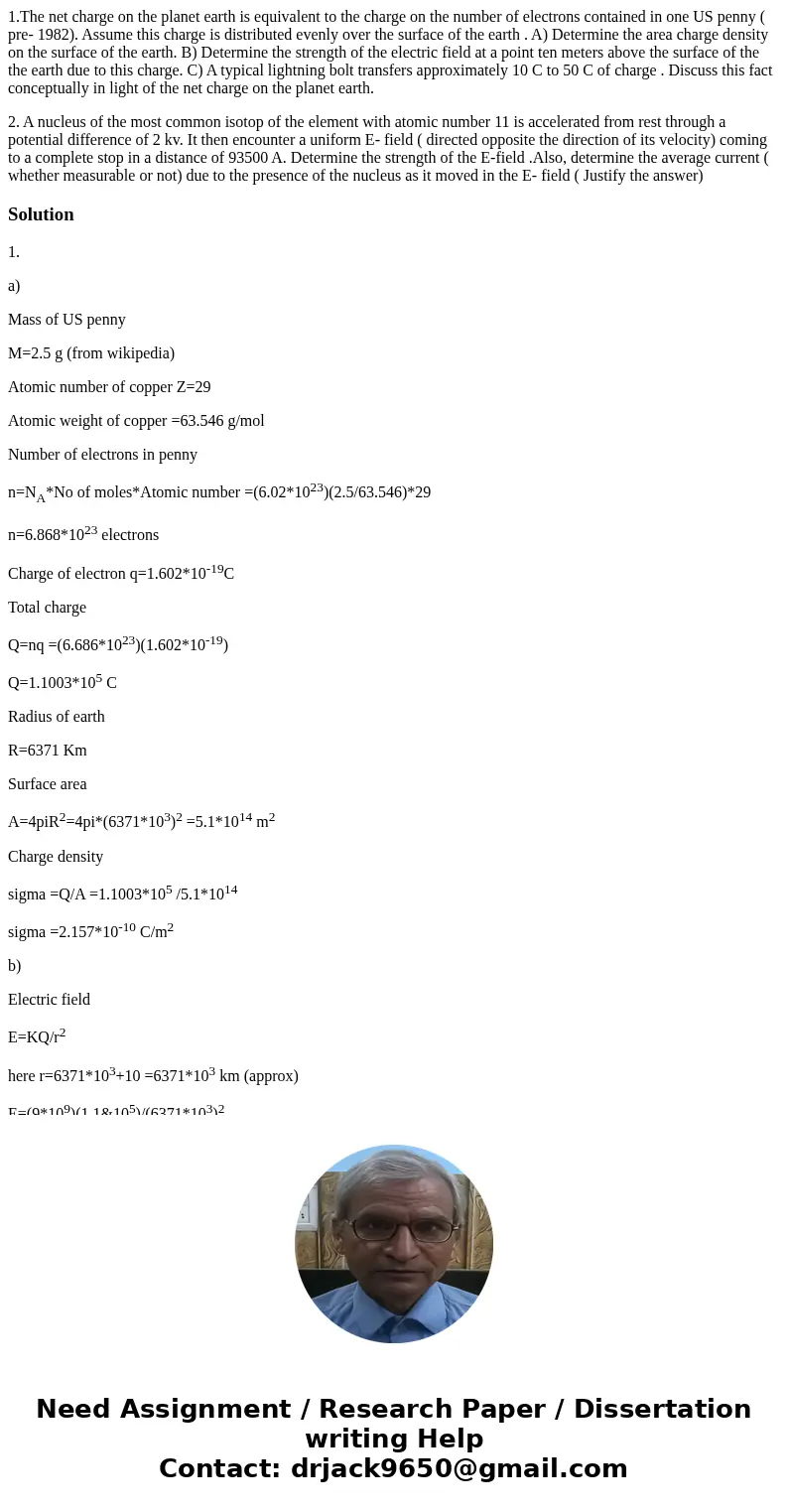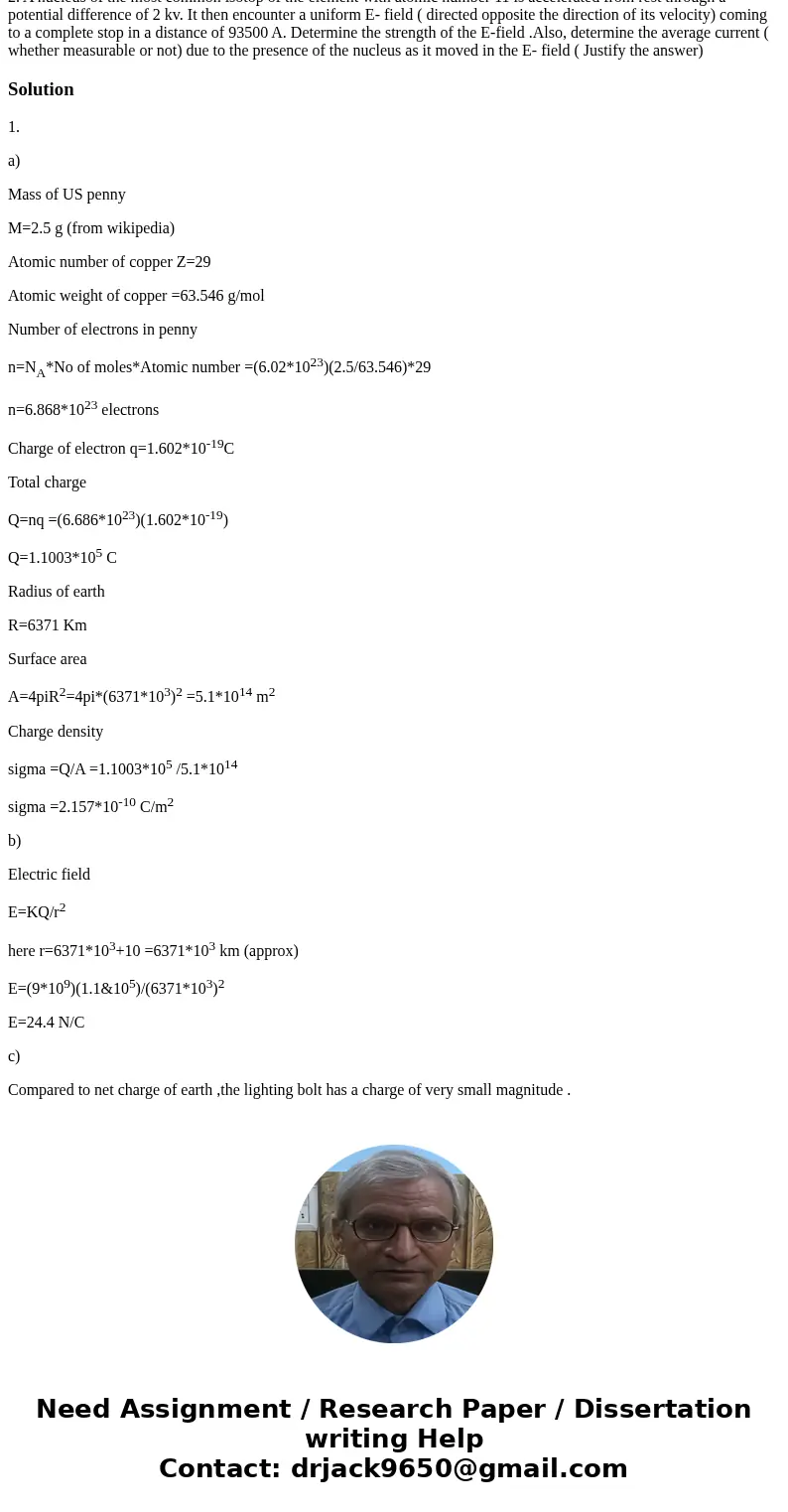1The net charge on the planet earth is equivalent to the cha
1.The net charge on the planet earth is equivalent to the charge on the number of electrons contained in one US penny ( pre- 1982). Assume this charge is distributed evenly over the surface of the earth . A) Determine the area charge density on the surface of the earth. B) Determine the strength of the electric field at a point ten meters above the surface of the the earth due to this charge. C) A typical lightning bolt transfers approximately 10 C to 50 C of charge . Discuss this fact conceptually in light of the net charge on the planet earth.
2. A nucleus of the most common isotop of the element with atomic number 11 is accelerated from rest through a potential difference of 2 kv. It then encounter a uniform E- field ( directed opposite the direction of its velocity) coming to a complete stop in a distance of 93500 A. Determine the strength of the E-field .Also, determine the average current ( whether measurable or not) due to the presence of the nucleus as it moved in the E- field ( Justify the answer)
Solution
1.
a)
Mass of US penny
M=2.5 g (from wikipedia)
Atomic number of copper Z=29
Atomic weight of copper =63.546 g/mol
Number of electrons in penny
n=NA*No of moles*Atomic number =(6.02*1023)(2.5/63.546)*29
n=6.868*1023 electrons
Charge of electron q=1.602*10-19C
Total charge
Q=nq =(6.686*1023)(1.602*10-19)
Q=1.1003*105 C
Radius of earth
R=6371 Km
Surface area
A=4piR2=4pi*(6371*103)2 =5.1*1014 m2
Charge density
sigma =Q/A =1.1003*105 /5.1*1014
sigma =2.157*10-10 C/m2
b)
Electric field
E=KQ/r2
here r=6371*103+10 =6371*103 km (approx)
E=(9*109)(1.1&105)/(6371*103)2
E=24.4 N/C
c)
Compared to net charge of earth ,the lighting bolt has a charge of very small magnitude .


 Homework Sourse
Homework Sourse